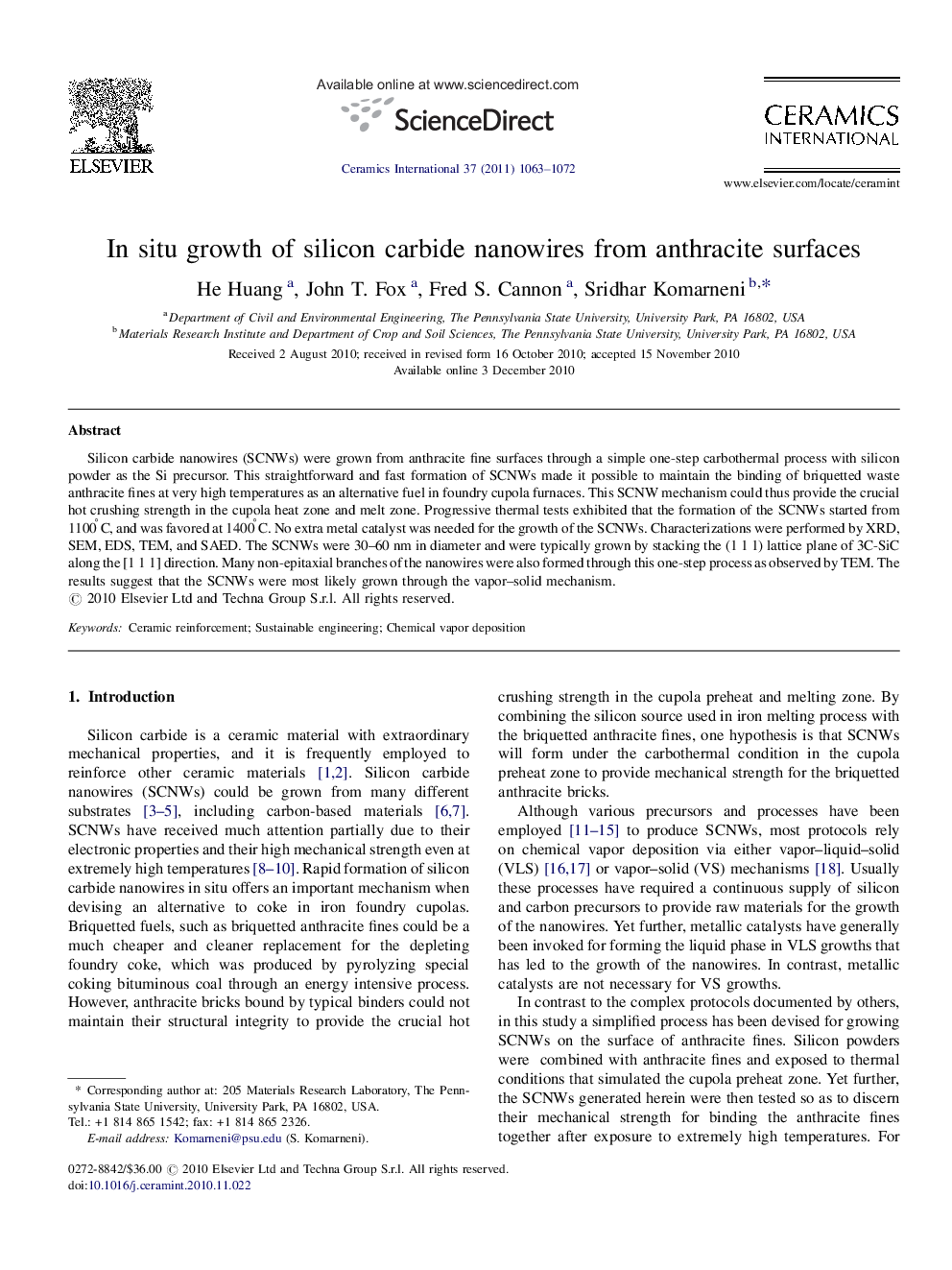| Article ID | Journal | Published Year | Pages | File Type |
|---|---|---|---|---|
| 10626309 | Ceramics International | 2011 | 10 Pages |
Abstract
Silicon carbide nanowires (SCNWs) were grown from anthracite fine surfaces through a simple one-step carbothermal process with silicon powder as the Si precursor. This straightforward and fast formation of SCNWs made it possible to maintain the binding of briquetted waste anthracite fines at very high temperatures as an alternative fuel in foundry cupola furnaces. This SCNW mechanism could thus provide the crucial hot crushing strength in the cupola heat zone and melt zone. Progressive thermal tests exhibited that the formation of the SCNWs started from 1100Â ÌC, and was favored at 1400Â ÌC. No extra metal catalyst was needed for the growth of the SCNWs. Characterizations were performed by XRD, SEM, EDS, TEM, and SAED. The SCNWs were 30-60Â nm in diameter and were typically grown by stacking the (1Â 1Â 1) lattice plane of 3C-SiC along the [1Â 1Â 1] direction. Many non-epitaxial branches of the nanowires were also formed through this one-step process as observed by TEM. The results suggest that the SCNWs were most likely grown through the vapor-solid mechanism.
Related Topics
Physical Sciences and Engineering
Materials Science
Ceramics and Composites
Authors
He Huang, John T. Fox, Fred S. Cannon, Sridhar Komarneni,
